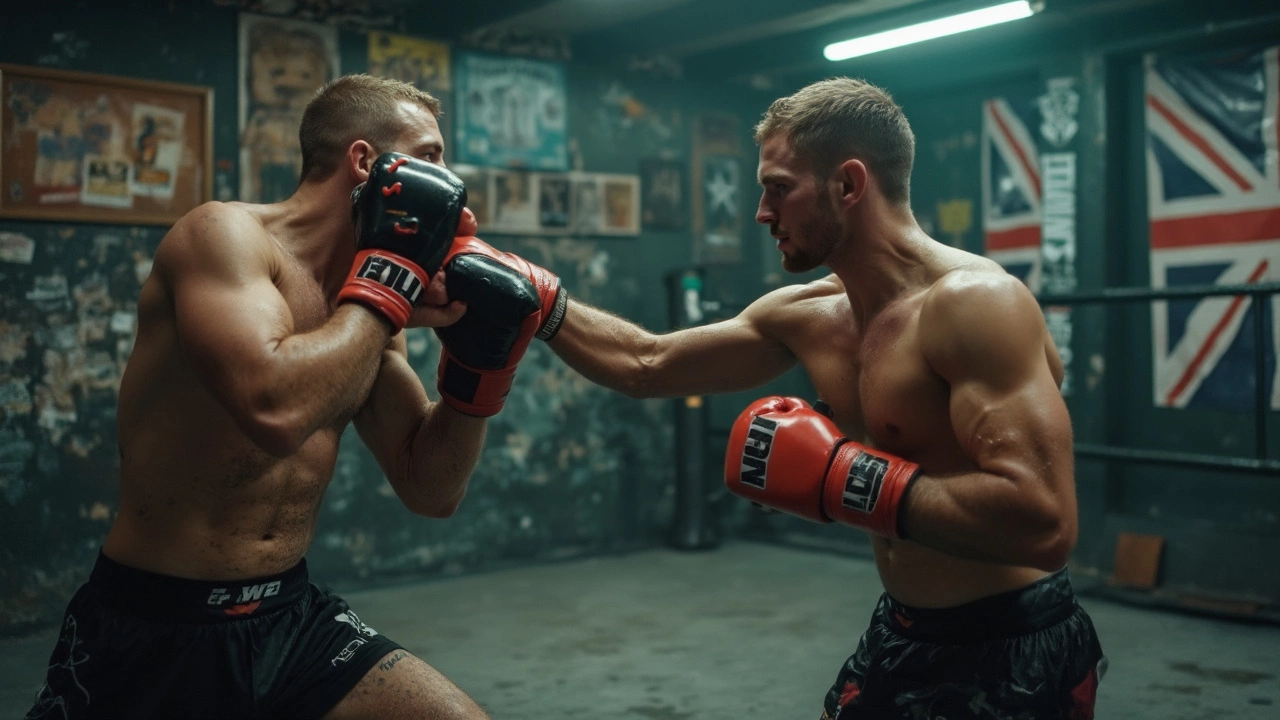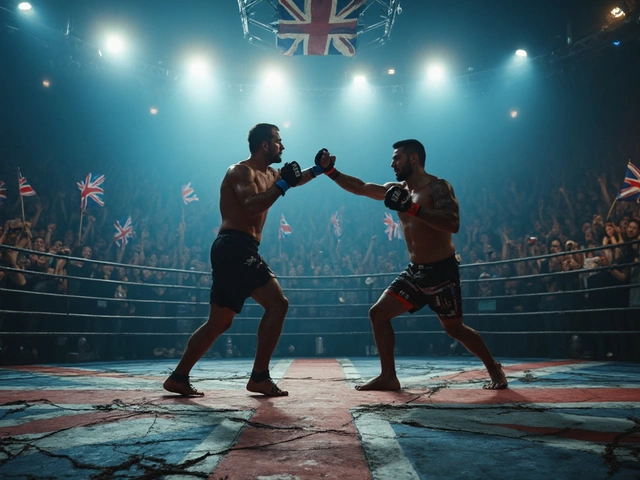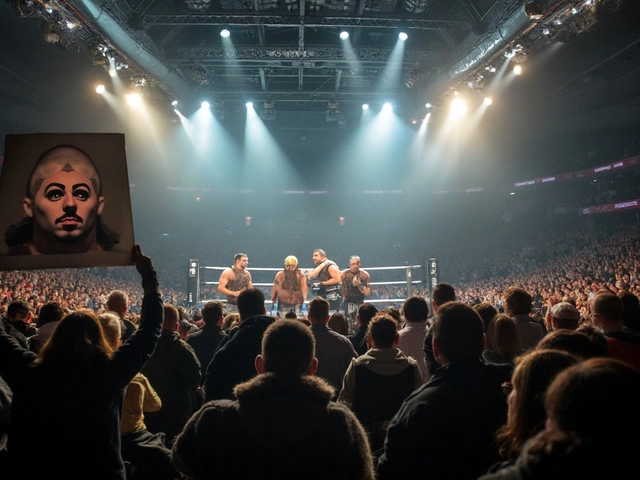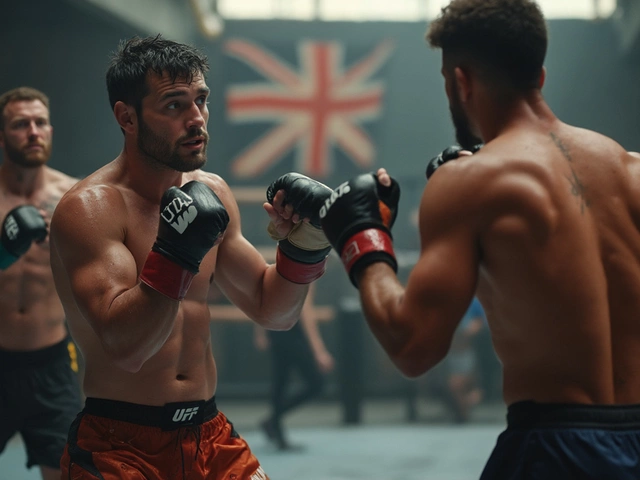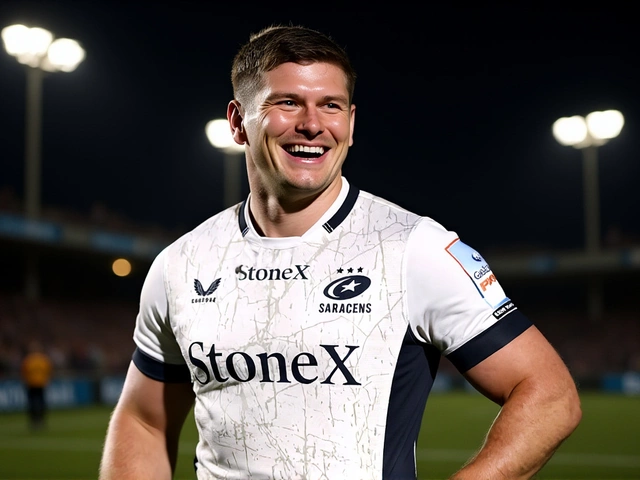Fighters at the top of MMA and the UFC don't just throw punches—they break their bodies down, rebuild, and do it all on strict routines. Jumping into training with random YouTube videos gets you nowhere fast. Real fighters swear by compound lifts, balance drills, and a mix of wrestling with striking, not just endless bag work. Their daily schedules are brutal: early-morning runs, mid-day grappling, evenings packed with pad work and sparring. No slacking—every session has a purpose.
Want one trick almost every top fighter follows? Keep sessions short but intense. Champions like Alexander Volkanovski never go all-out for too long—you'll see them sprint, then recover, then sprint again. It's called interval training, and it's key for those wild last-minute bursts you see in the cage. Staying sharp means training brain and body, so pros do tons of drilling under fatigue; when your arms feel like lead, that's when real progress happens.
- Core Training Habits of MMA and UFC Pros
- Insider Facts: Knockouts, Brutal Moments, and Scandals
- How to Start Training Like an MMA or UFC Fighter
- The Lowdown on MMA vs. UFC Rules
- Fueling Fighters: Diet Plans that Actually Work
- Fandom, Odds, and Heroes: What's Shaping MMA Right Now
Core Training Habits of MMA and UFC Pros
The physical demands of MMA and UFC are no joke. Pros train with a mix of methods, fine-tuned for real fight nights. Strength isn’t just for show—fighters need explosive power, solid conditioning, flexibility, and razor-sharp reflexes. You’ll often see them start their days with roadwork at sunrise, just like old-school boxers. Running builds that gas tank so you don’t gas out in a third-round scramble.
But it’s not just about endless cardio. Fighters usually split training into three main blocks each day: striking, grappling, and strength. For example, Israel Adesanya, one of today’s slickest strikers, works not just on technique but on footwork and head movement drills—think hundreds of rounds shadowboxing and slip-rope work per week. Wrestling workouts are brutal on purpose. Guys like Khabib Nurmagomedov used to run through endless takedown rounds with fresh partners to mimic fight fatigue.
When it comes to actual routines, here’s what’s common in elite camps:
- Strength & Conditioning: Focus on compound lifts (deadlifts, squats, pull-ups) mixed with kettlebell circuits. This builds that power to explode from a clinch or fire off a knockout punch.
- Interval Training: Short, all-out bursts (30 seconds full-power, 30 seconds break) for about 5-10 rounds. This style mimics the heart-pounding tempo of a real fight.
- Technique Drilling: No skipping basics. Pros drill armbar escapes, sweeps, and common transitions hundreds—sometimes thousands—of times a week.
- Sparring: But not every day. Most top fighters spar hard only once or twice a week now to avoid burnout and brain trauma, switching to light, technical rounds the rest of the week.
- Active Recovery: Ice baths, mobility work, and yoga sessions are built in. No one stays injury-free without proper recovery.
On top of it, nutrition and sleep make or break fighters. Take a look at what fighters usually focus on through a typical training camp:
| Training Element | Weekly Hours |
|---|---|
| Strength & Conditioning | 6-8 |
| Striking Technique | 5-7 |
| Wrestling/Grappling | 6-10 |
| Sparring | 2-3 |
| Recovery | 4-5 |
All that says one thing: what fans see on fight night, the training tips and skills unleashed, come from months of sweat and pain. Every day is mapped out, sometimes to the minute. Fighters work closely with coaches and sports scientists to figure out exactly how hard to push, and when to back off. So if you want to train like a champ, copy their work ethic first—then worry about flashy techniques later.
Insider Facts: Knockouts, Brutal Moments, and Scandals
Knockouts aren’t just flashy—they change careers. Think back to Jorge Masvidal’s flying knee on Ben Askren at UFC 239. It happened in just five seconds, and it still holds the record for fastest KO in UFC history. It also launched Masvidal to superstar status overnight. Another wild one? Edson Barboza’s spinning wheel kick KO against Terry Etim. Most fans agree, it’s still one of the craziest knockouts we’ve ever seen.
There’s no shortage of brutal moments. Remember when Anderson Silva broke his leg against Chris Weidman? That wasn’t just hard to watch—it reshaped how fighters and coaches think about leg kicks and shin conditioning. Some of these injuries are rare, but when they happen they hit headlines everywhere. Another classic: the bloodbath between Robbie Lawler and Rory MacDonald at UFC 189. That fight was so violent, both guys left pieces of themselves in the octagon and it instantly landed on every toughest fight list.
Scandals have rocked MMA and UFC, too. Jon Jones is probably the biggest name tied up in trouble. He’s had doping violations and legal run-ins, even getting stripped of his titles more than once. Conor McGregor, a fan favorite, has dodged suspensions for trash talk but was once fined for throwing a dolly at a bus. These scandals shape public perception and, honestly, keep headlines buzzing between fights.
Some famous stats and moments:
| Moment | Event | Year | Impact |
|---|---|---|---|
| Masvidal KO vs Askren | UFC 239 | 2019 | Fastest KO, Masvidal’s rise |
| Silva leg break | UFC 168 | 2013 | Changed attitude on leg kicks |
| Barboza wheel kick KO | UFC 142 | 2012 | Highlight reel staple |
| Lawler vs MacDonald II | UFC 189 | 2015 | Legendary violence |
The training tips fighters give after these battles are simple: expect the unexpected, train for every weird angle, and recover smart after taking a beating. Even the best get caught—staying ready means learning from every painful moment, whether it’s a KO or a controversy making headlines.
How to Start Training Like an MMA or UFC Fighter
Getting started in MMA or UFC training isn't as intimidating as it sounds, but you do need a game plan. First thing—find a legit gym that actually teaches mixed martial arts, not just single styles like boxing or jiu-jitsu. Most real MMA gyms offer trial classes. Visit a few, ask about their coaches (bonus points if they’ve cornered fighters in actual events), and check out the vibe. You want coaches who care more about your progress than their Instagram followers.
Next, figure out what you’re training for. Looking to fight? Want to just get in shape? Either way, you’ll get thrown into a mix of disciplines: striking (usually Muay Thai or boxing), grappling (Brazilian Jiu-Jitsu, wrestling), and strength & conditioning. Training like a pro means you can’t ignore one area. UFC stars like Amanda Nunes started as specialists and had to pick up everything else to compete at the top level.
Here’s a basic way to ease in without flaming out or getting smashed:
- Start with two or three classes a week. Don’t rush to do it all: you want your body to adapt.
- Focus on good technique first. Forget power—bad habits are harder to fix later. Guys like Israel Adesanya spent years sharpening their basics before flashy moves.
- Cross-train. If you’re loving striking, try grappling too, or vice versa. Real MMA fighters blend it all.
- Invest in basic gear: gloves (16oz for sparring), shin guards, a mouthguard, and a cup. Save the pro stuff for later.
- Watch training tips from MMA and UFC fighters online, but listen to your coach more than random influencers.
Don’t ignore recovery. Ice baths, stretching, foam rolling—the legends of MMA and UFC history all have crazy stories of injuries, and they learned to fix problems early. Think long-term: more classes, cleaner diet, but avoid those "weekend warrior" injuries by pacing yourself. Your first year’ll feel messy, but stick with it. Every great knockout you see—those fighters started as nervous rookies, just like you.
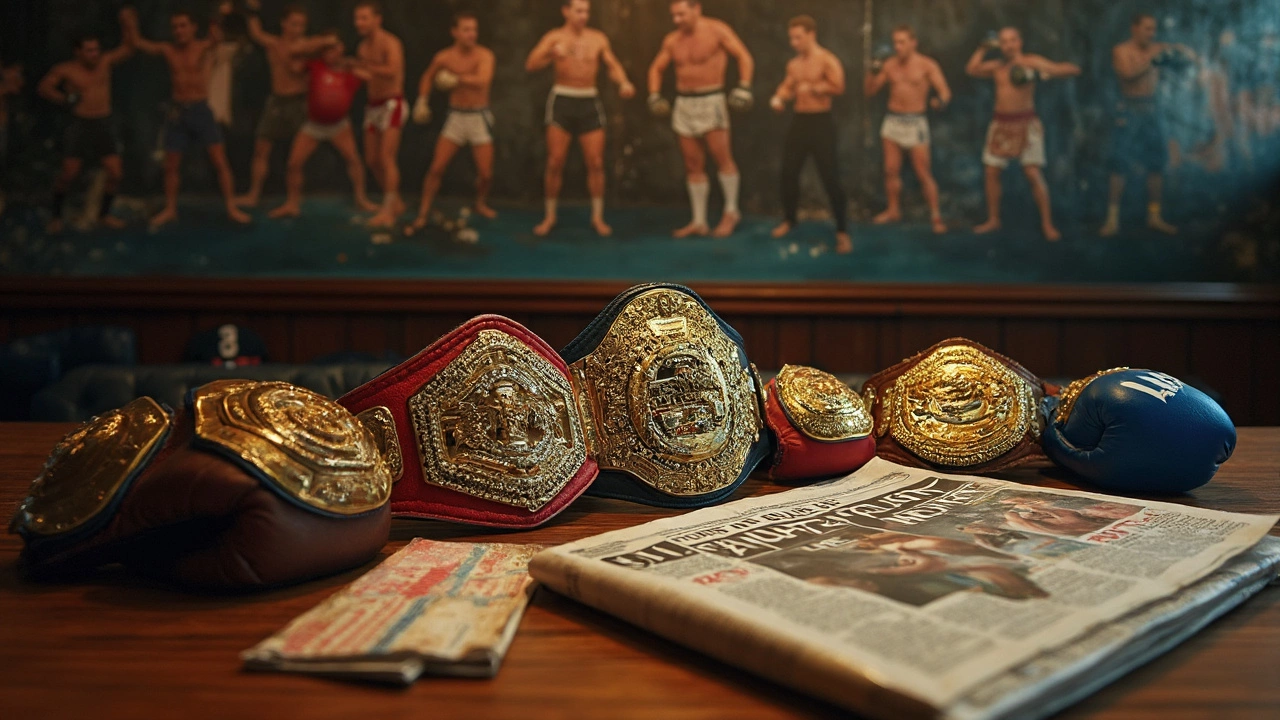
The Lowdown on MMA vs. UFC Rules
MMA stands for Mixed Martial Arts—it’s the broad sport that covers all sorts of promotions from Bellator to ONE Championship, and of course, the UFC. The UFC is by far the biggest and flashiest in the business, but don’t mix up the two: not all MMA is UFC, though all UFC is MMA. Now, let’s break down how the rules stack up and where things actually differ.
The main thing to drill in your head? Most top MMA leagues, including the UFC, use something called the Unified Rules. These rules set the standards for what’s legal (think: no headbutts, eye gouges, or hitting the back of the head) and what isn’t in the cage. But each promotion—like Bellator or PFL—can tweak the rules just a bit. For example, ONE Championship allows knees to the head of a grounded fighter, while the UFC does not.
- Training tips from MMA and UFC fighters often stress: Know the exact rule set you’re fighting under. It seriously can change fight strategy in a big way.
- Rings vs. cages? The UFC ALWAYS uses a cage (an Octagon). Other promotions sometimes use rings, and that affects clinching and escaping.
- UFC rounds are usually 3 x 5 minutes (championship fights: 5 x 5min). Other leagues might go 2 x 10min or 3 x 3min.
- Some international MMA promotions allow tournaments in a single night. UFC banned this a long time ago.
Here’s a side-by-side for quick comparison:
| Aspect | UFC (Unified Rules) | Other MMA Promotions |
|---|---|---|
| Cage | Octagon (cage, always) | Cage or ring (varies) |
| Rounds | 3 x 5 min, title: 5 x 5 min | Some use 2 x 10 min, or 3 x 3 min |
| Knees to Grounded Opponent | Illegal | Legal in ONE Championship |
| 12-6 Elbows | Illegal | Illegal in most, allowed in some |
| Tournaments | No (single fights only) | Allowed in certain leagues |
As MMA ref John McCarthy said about how rules change fight prep:
“If you’re not training for the rules you’re about to step into, you’re already down a round before they close the cage.”
Last thing: when following the latest news in MMA and UFC or checking out upcoming fights, always see which ruleset is in play. Even the best knockouts or most brutal moments can look different depending on what’s legal that night. There’s no one-size-fits-all strategy, so fighters—and smart fans—always pay attention to rules before making fight picks or checking the betting odds for MMA and UFC events.
Fueling Fighters: Diet Plans that Actually Work
There’s no magic meal plan that fits every MMA or UFC fighter, but a few diet rules stay true no matter who you ask. After all, what you put in your body is straight-up fuel—mess it up, and you’re toast in the cage. Most pros stick to simple, whole foods and track everything with apps like MyFitnessPal. George St-Pierre is known for clean, repetitive meals—think grilled chicken, broccoli, and rice, a few times a day—but always on point with calories and protein.
Cutting weight is the toughest part. Khabib Nurmagomedov famously dropped more than 20 pounds in a single fight camp. For major events, fighters often go high-protein, low-carb two weeks before weigh-ins. Hydration is another monster—fighters cut water slowly, then rehydrate fast after weigh-ins, sometimes gaining 10% of their body weight back overnight. But there’s a limit: the UFC now bans extreme dehydration, so old-school horror stories are less common.
- training tips: Eating 1-1.5 grams of protein per pound keeps muscle strong through brutal camps.
- Carb up after cardio—guys like Dustin Poirier refill with sweet potatoes and oats.
- Healthy fats (avocado, nuts, olive oil) keep energy steady through long sessions.
- Electrolyte drinks (not just plain water!) after hard weight cuts prevent cramping and fatigue.
No two fight camps look exactly the same, but here’s a quick look at how a pro’s week of eating might break down:
| Meal | Typical Foods |
|---|---|
| Breakfast | Eggs, oats, berries, black coffee |
| Lunch | Grilled chicken, brown rice, greens |
| Snack | Protein shake, banana, almond butter |
| Dinner | Lean beef or salmon, sweet potato, spinach |
| Pre-Bed | Greek yogurt with nuts |
Science backs it up: UFC’s own Performance Institute found that fighters perform best at 40-50% carbs, 30% protein, and 20-30% fat on training days. There’s no monster cheat day or donuts at night if you want to make weight and go the distance. If you’re trying to copy the pros, start simple: cut processed junk, eat to recover, and when fight week comes—listen to your own body, not just what someone on TikTok says.
Fandom, Odds, and Heroes: What's Shaping MMA Right Now
MMA fans are wild. It’s not just about loving the sport; these days, a fighter’s social media is as important as their win record. Huge followings can make or break a career—even newcomers like Bo Nickal, with rapid-fire knockouts and meme-worthy interviews, blow up online before hitting main events. Just check Instagram—guys like Conor McGregor and Israel Adesanya rack up millions of followers and shape what people talk about every week.
Now, the money follows the fans, and that’s where training tips from MMA and UFC fighters become gold. With more eyes on sport betting, every minor injury or trash-talk session can actually move betting odds for MMA and UFC fights. In fact, sportsbooks changed lines for UFC 303 when rumors about an injury to the co-main fighter leaked on fight week. The stakes are high—over $350 million is wagered globally on UFC events every year.
Trying to figure out who the fan favorites in MMA and UFC are? Here’s a super current list:
- Conor McGregor – Still the biggest draw, whether he fights or just tweets trash.
- Sean O’Malley – Flashy, colorful, and undefeated at bantamweight, he’s Gen Z’s top pick.
- Liza Lockhart – Fresh off a KO win and already trending among younger fans.
- Charles Oliveira – Beloved for all-action fights and wild submissions.
- Zhang Weili – Consistently winning, consistently entertaining in the strawweight division.
Odds and hype aren’t just for fun; they mess with fight night nerves and training camps. If you’re chasing updates, sites like ESPN, MMAFighting, and official UFC social media drop the latest news in MMA and UFC almost daily. Here’s a handy data table from June 2025 that shows betting odds and fan popularity for upcoming fights in MMA and UFC:
| Event | Fighter | Opponent | Odds to Win | Fan Poll % |
|---|---|---|---|---|
| UFC 306 | Sean O’Malley | Marlon Vera | -210 | 68% |
| MMA Grand Prix | Liza Lockhart | Tatiana Suarez | +135 | 51% |
| UFC 306 | Charles Oliveira | Islam Makhachev | +150 | 44% |
| UFC 306 | Zhang Weili | Jessica Andrade | -155 | 56% |
Big knockouts, legends of MMA and UFC history getting involved as coaches, and the most brutal MMA and UFC moments all fuel hype. Remember the Max Holloway vs. Justin Gaethje brawl? Fans still replay the walk-off KO from April 2024. And when a scandal hits—like recent accusations of fight camp spying—fan conversations explode and betting lines go nuts. Staying plugged into what’s really shaping today’s MMA keeps you a step ahead, whether you’re training, betting, or just streaming every highlight you can find.
